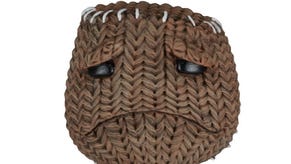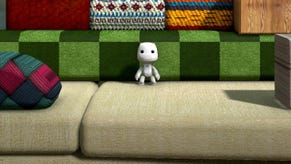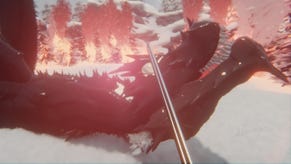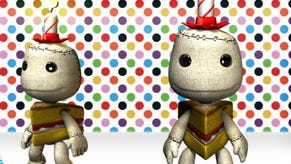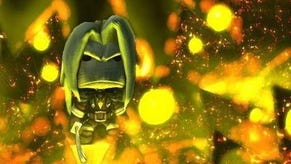LittleBigPlanet 2 Beta
Fabric-a-brac.
I wish I loved LittleBigPlanet. I wanted to. It's clever and confident, expressive and inventive. All the things you hope for in a new game. Yet I could only admire it from afar for the things it tried. Every attempt I made to snuggle up close and lose myself in its tactile universe was stymied by floaty, twitchy control and occasionally fussy level design. Whenever I tried to create something of my own, the creation suite overwhelmed me with a tangle of levers and connections that meant that all the great ideas in my head fizzled on the screen.
The game sold slowly but steadily, but the idealised dream of a vast fuzzy-felt community never really came to pass. The game clocked up a few million user levels shared, but once you remove the abandoned works in progress, half-finished doodles and levels designed to help players rack up Trophies without trying, it was clear that only a small percentage of those who bought the game ever really grasped the full potential of the design side of things. Most were content to rely on these few to make good on the concept's promise.
The temptation for a follow-up, you'd think, would be to pare things back, make it idiot-proof, box things in a bit more and make it easier for more people to make simpler things. What you lose in creativity, you gain in sheer volume of activity. The safe approach. It's to Media Molecule's credit that instead it has stuck to its guns and continued its expedition ever deeper into the jungle of user-defined content, knocking down the partition walls marked "Platform Game" and allowing everyone to make any kind of game they please.
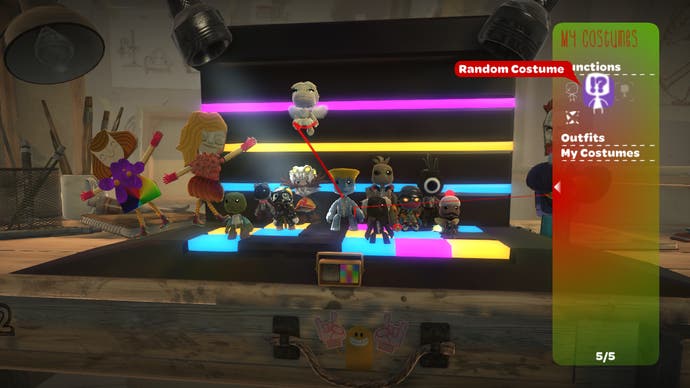
With the UK beta trial for the game now well underway, we're starting to see how LittleBigPlanet 2 might fare in the wild. The cardboard and cloth look remains the same, but unpick the stitches and you find the stuffing has changed quite radically. To help illustrate how this impacts the gameplay, there are three story levels available to show off the new toys.
Larry Da Vinci's Hideout introduces you to the new grapple hook and jump pad objects. Both open the game out vertically, allowing for a level that takes Sackboy on an inexorable upwards climb, swinging like Tarzan and bouncing like a pinball along the way. The grapple hook can only attach to the same textured objects that Sackboy can grab, and it suffers a little from that old floaty feeling, but it's easy to see how it changes the way levels can be designed. Jump pads, on the other hand, are such a staple of the platform genre that it takes a while for you to remember that they weren't in the first game.
The Cosmos is set on a spaceship and demonstrates how the game's gravity can be tinkered with. Controlling Sackboy in low gravity is actually easier than normal, as he makes enormous graceful leaps rather than fiddly ineffectual hops. There are also some block puzzles that must be solved by rolling atop a pipe and flipping the gravity up and down. It's not too taxing, but it's the sort of seamless combination of platforming prowess and environmental brainteaser that Mario specialises in. The Cosmos also shows how levels can now be linked, with unlockable doorways feeding players from one stage to another.
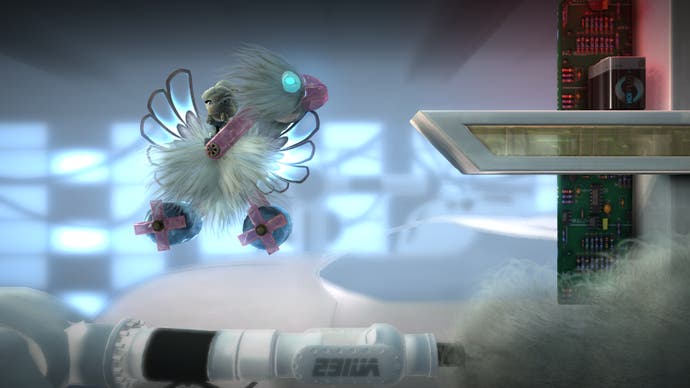
Finally, The Factory of a Better Tomorrow brings Sackbots into the equation. These programmable AI drones don't exhibit much independence here, simply following Sackboy when he frees them from their cages, but they certainly help to make the game feel more populated. The level itself feels very LocoRoco, as you guide your trail of followers to safety, through pipes and under stamping metal presses.
There's also Block Drop, a curious and disappointing symbol-matching mini-game where you tap the face buttons that correspond to the shapes at the bottom of an ever-decreasing pile. Playable as a multiplayer mash-'em-up, it's presumably meant to show how gameplay no longer needs Sackboys to work, but it's hardly the most riveting example to use.


